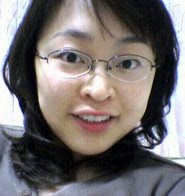National Flag

The Korean flag is called Taegeukgi. Its design symbolizes the principles of the yin and yang in Asian philosophy. The circle in the center of the flag is divided into two equal parts. The upper red section represents the proactive cosmic forces of the yang. Conversely, the lower blue section represents the responsive cosmic forces of the yin. The two forces embody the concepts of continual movement, balance, and harmony that characterize the sphere of infinity. The circle is surrounded by four trigrams, one in each corner. Each trigram symbolizes one of the four universal elements: heaven, earth, fire, and water.
National Flower

Koreans have loved the rose of Sharon for centuries. According to records, Koreans have treasured the rose of Sharon as a heavenly flower since ancient times. In fact, the Silla Kingdom called itself Mugunghwa Country. Even the ancient Chinese referred to Korea as "The land of gentlemen where Mugunghwa blooms." Love for the flower was further heightened when Mugunghwa samcheolli hwaryeo gangsan" ("Rose of Sharon, thousand miles of beautiful mountain and river land!") was written into the national anthem of the late 19th century. As the rose of Sharon has been an important part of the Korean culture for centuries, it was only natural that the government adopted it as the national flower after Korea was liberated from Japanese colonial rule. There are more than 100 cultivars of the rose of Sharon indigenous to Korea. There are single, semi-double, and double types of flowers. Depending on the colors of flower, they are divided into 3 groups, Dansim (flower with red center), Baedal (pure white flower), and Asadal (pink dots on the edges of the petals). The Dansim, single types of flowers, serves as Korea's national flower. The rose of Sharon blooms from early July through late October. Some 2,000 to 3,000 bloom on a single plant, which is strong enough to survive even when it is transplanted or cut for decoration or flower arrangements. Thus, the flower represents the wish for lasting national development and prosperity. Koreans cherish and care for the national flower as it symbolizes the many glories the country has experienced and the trials and tribulations the people have overcome.National AnthemOur national anthem is "Aegukga," which means a "Love the Country." In 1896, the Dongnip Sinmun (Independence News) published various versions of lyrics for this song. It is not known exactly what music they were sung to in its early days. Records show that a Western-style military band was formed during the time of the Dae-han Empire (1897-1910) and that "the Daehan Empire Aegukga" was composed in 1902 and played at important national functions.The original words of Aegukga appeared in a written form around 1907 to inculcate allegiance to the nation and foster the spirit of independence as the country faced threats of foreign annexation. Over the years, the lyrics have gone through several versions until they were adopted as the national anthem in the present form in 1948.Before the birth of the Republic in 1948, the words were often sung to the tune of the Scottish folk song, Auld Lang Syne. Maestro Ahn Eak-tai (1905-1965), then living in Spain, felt that it was inappropriate to sing this patriotic song to the tune of another country's folk song. So, he composed new music to go with the lyrics in 1935, and the Korean Provisional Government in exile adopted it as the national anthem. While Koreans outside the country sang the anthem to the new tune, those at home continued to use Auld Lang Syne till after Korea was liberated in 1945.The Republic of Korea Government in 1948 officially adopted the new version as the national anthem and began to use it at all schools and official functions.















